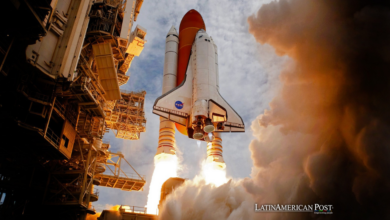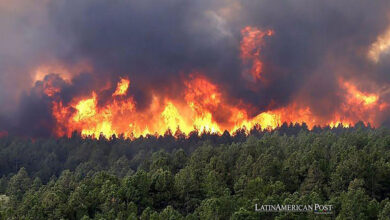How is space debris controlled?
Debris from space explorations can be found more and more frequently. Let's see how this problem can be solved .

Scientists discover the ideal way to ‘clean up’ the debris produced by space expeditions. / Photo: Pixabay
LatinAmerican Post | Ariel Cipolla
Listen to this article
Leer en español: ¿Cómo se controla la basura espacial?
Expeditions into space are a huge advance for science. Recently, we had seen that the TN media commented that Starship, the SpaceX spacecraft that will seek to take tourists to space, got its first successful test. Therefore, we are seeing enormous progress in this area.
Although, as we discussed, this is a huge advance in science, it is also true that it can affect the planet. In other words, the high price we must pay is that there is an overload of space debris … but it can also be prevented, due to the advances in this area.
The problem of space debris
The term "space junk" is gaining more and more importance in recent times . Última Hora highlights that the space debris that currently surrounds the Earth has increased, reaching more than 18,000 objects, acoording to NASAs Orbital Debris Program Office.
In this sense, the waste that humans generate can lead to problems and confusion. Recently, we saw that the Zócalo de México website reported that the people of Saltillo believed they were observing Comet Neowise, but in reality it was space debris, which lit up the sky in the area.
The member of the Saltillo Astronomical Society, Ramatriz Arellano Trueba, had mentioned that the people of Coahuila believed they had seen a comet, but this is not that visible to the human eye. Actually , it was the remains of a Russian satellite drifting into space debris that could not be controlled efficiently.
Also read: Warming threat to tropical forests risks release of carbon from soil
New alternatives have risen to be able to "clean" space. The specialized website of National Geographic mentions that scientists from the University of Colorado propose the first "global eco-space policy in history", since satellites accumulate in low Earth orbit that reached the end of their useful life, therefore, they would seek to increase the Clear Space type missions to clean up that area.
One of them would happen, according to the EuropaPress website, in 2025, being the first mission to remove space debris. According to what the founder and CEO of the company comments, the problem of space debris "is more urgent than ever", since there are about 2,000 live satellites in space and more than 3,000 failed ones.
Against this background, it is worth highlighting the importance of efficient cleaning of space debris. For example, the Cambio website16 highlights that space junk "increases the risk of cosmic collision", being dangerous due to the speed at which it circulates, and can generate a chain reaction against active satellites.
As the La Razón website mentions, space debris "threatens our conquest of space". This is due to the amount of debris that is flying over our heads, which implies that engineers must take it into account when operating in space, since they must consider the Earth's orbits to manage communications and trajectories.
In the future space race, it is clear that this is a problem that must be solved. While new technology allows us to get closer and closer to space exploration, it seems that the path will be one of gradual cleanup, perhaps in charge of missions that will begin in the near future.




